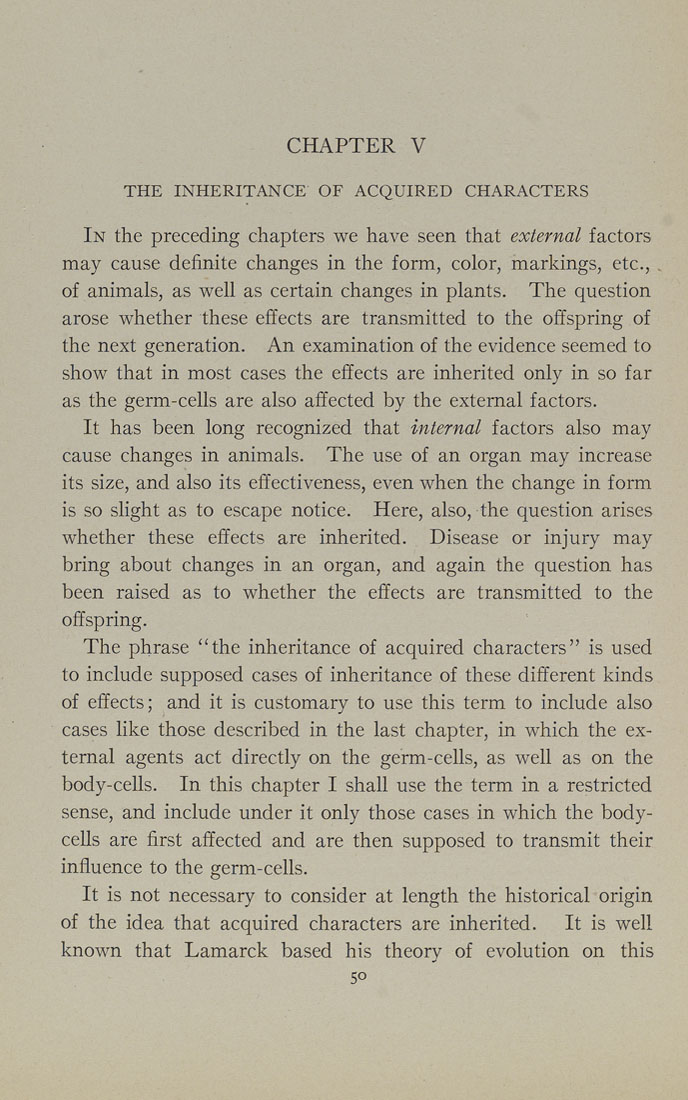CHAPTER V
THE INHERITANCE OF ACQUIRED CHARACTERS
In the preceding chapters we have seen that external factors
may cause definite changes in the form, color, markings, etc., .
of animals, as well as certain changes in plants. The question
arose whether these effects are transmitted to the offspring of
the next generation. An examination of the evidence seemed to
show that in most cases the effects are inherited only in so far
as the germ-cells are also affected by the external factors.
It has been long recognized that internal factors also may
cause changes in animals. The use of an organ may increase
its size, and also its effectiveness, even when the change in form
is so slight as to escape notice. Here, also, the question arises
whether these effects are inherited. Disease or injury may
bring about changes in an organ, and again the question has
been raised as to whether the effects are transmitted to the
offspring.
The phrase "the inheritance of acquired characters" is used
to include supposed cases of inheritance of these different kinds
of effects; and it is customary to use this term to include also
cases like those described in the last chapter, in which the ex¬
ternal agents act directly on the germ-cells, as well as on the
body-cells. In this chapter I shall use the term in a restricted
sense, and include under it only those cases in which the body-
cells are first affected and are then supposed to transmit their
influence to the germ-cells.
It is not necessary to consider at length the historical origin
of the idea that acquired characters are inherited. It is well
known that Lamarck based his theory of evolution on this
5°
|








